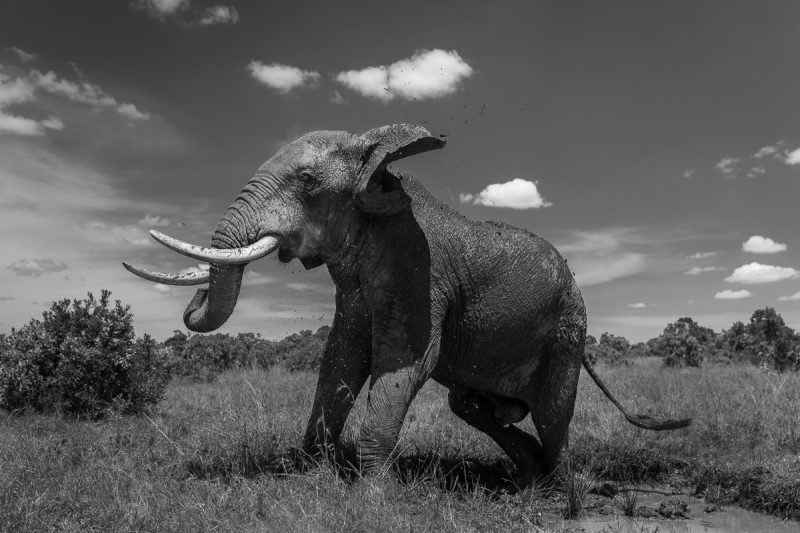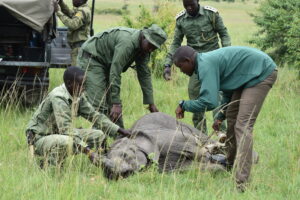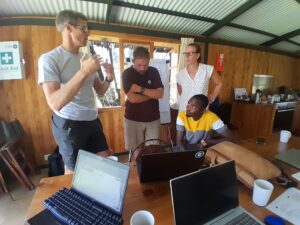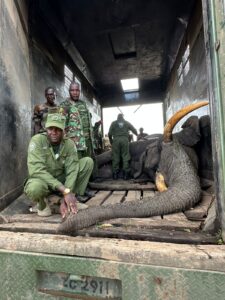The Mara Elephant Project ranger teams operating in the Mau, Loita and Nyakweri forests were all focused in May on combatting bushmeat poaching, illegal habitat destruction activities and promoting co-existence. The MEP “Alpha” Sheldrick Wildlife Trust Mau De-Snaring Unit in the Mau Forest destroyed kilns, shutdown illegal logging sites and made arrests alongside Kenya Wildlife Service (KWS) inside the forest. On May 16, they found a bush buck trapped in a snare, and were able to successfully release him and remove the snare.
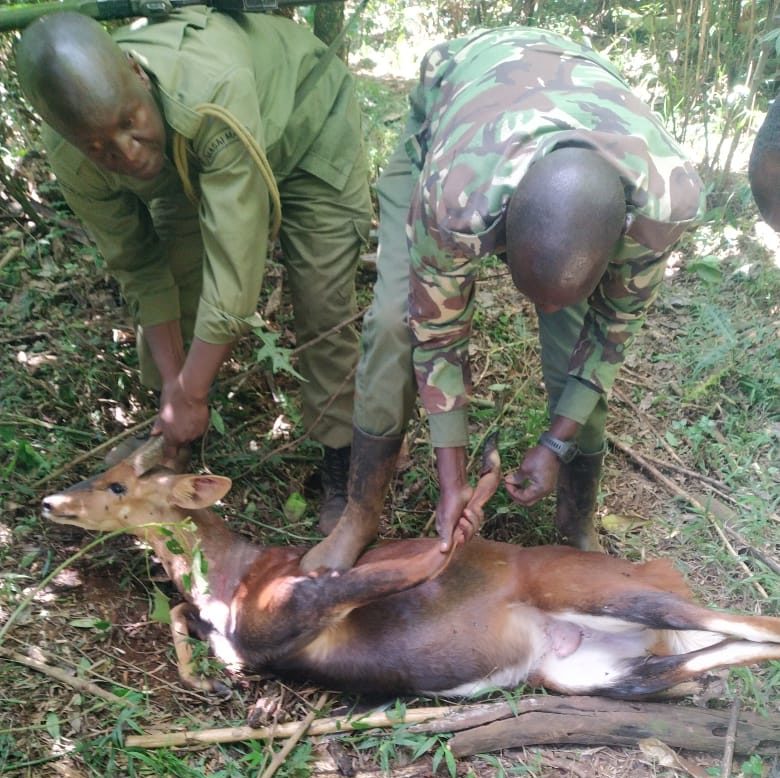
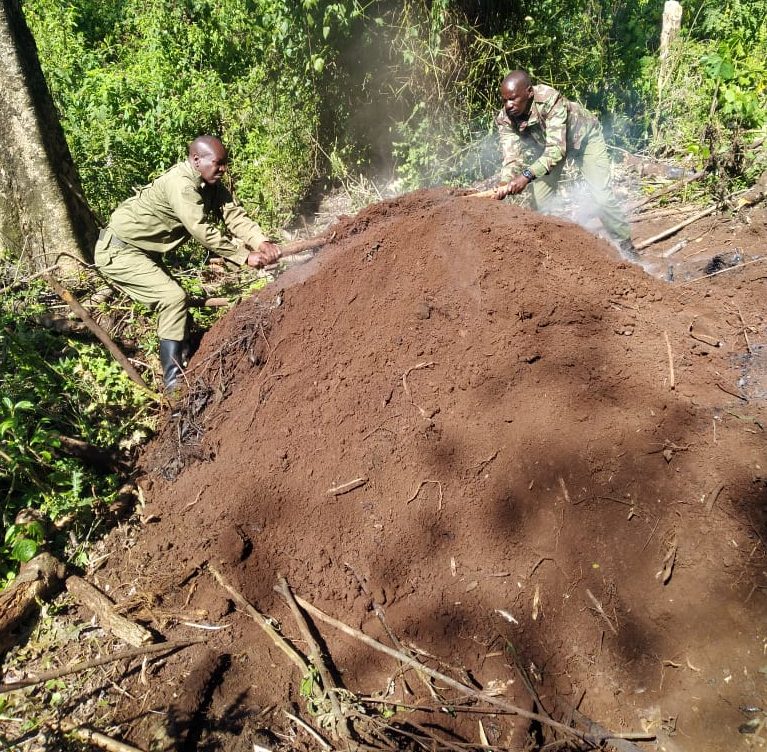
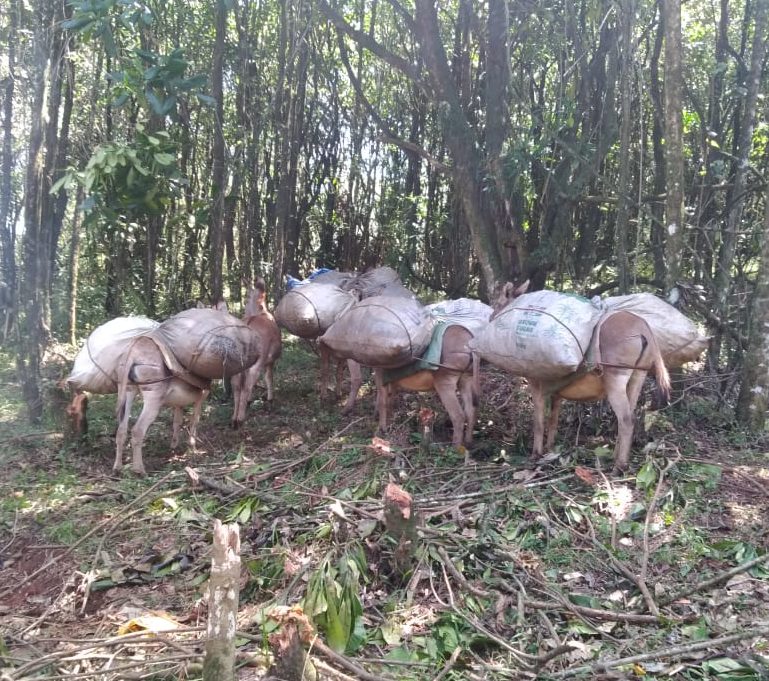
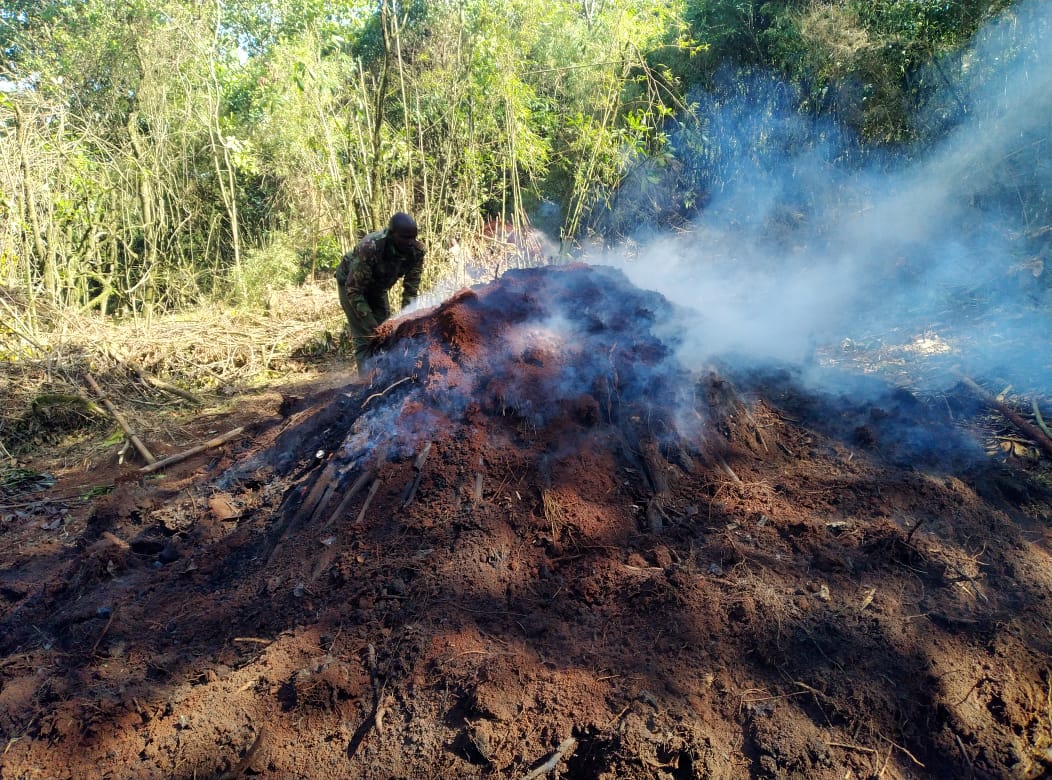
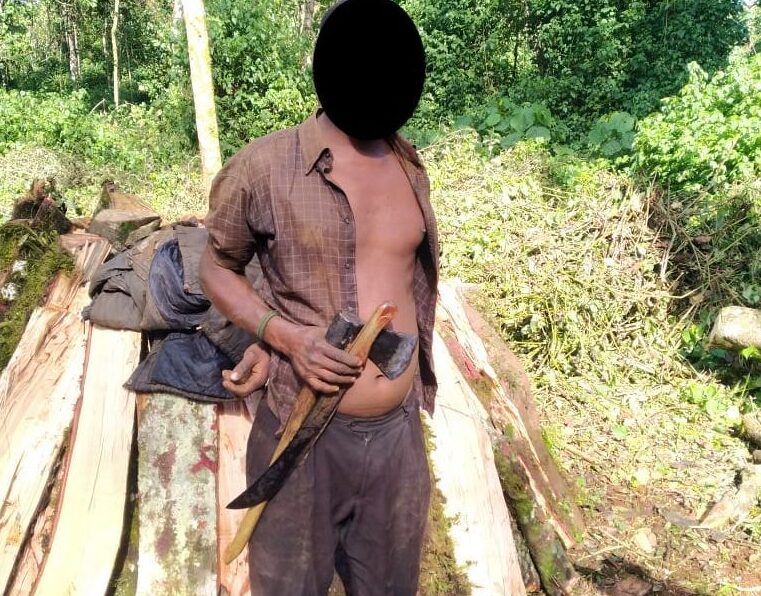
The MEP “Echo” ranger unit in the Loita Forest, sponsored by Lori Price, was busy protecting the forest and the wildlife that call it home over the last week of May. In one week alone, they had a bust that included 100 cedar posts then another with 200, and shutdown several illegal logging sites, made arrests and confiscated power saws.
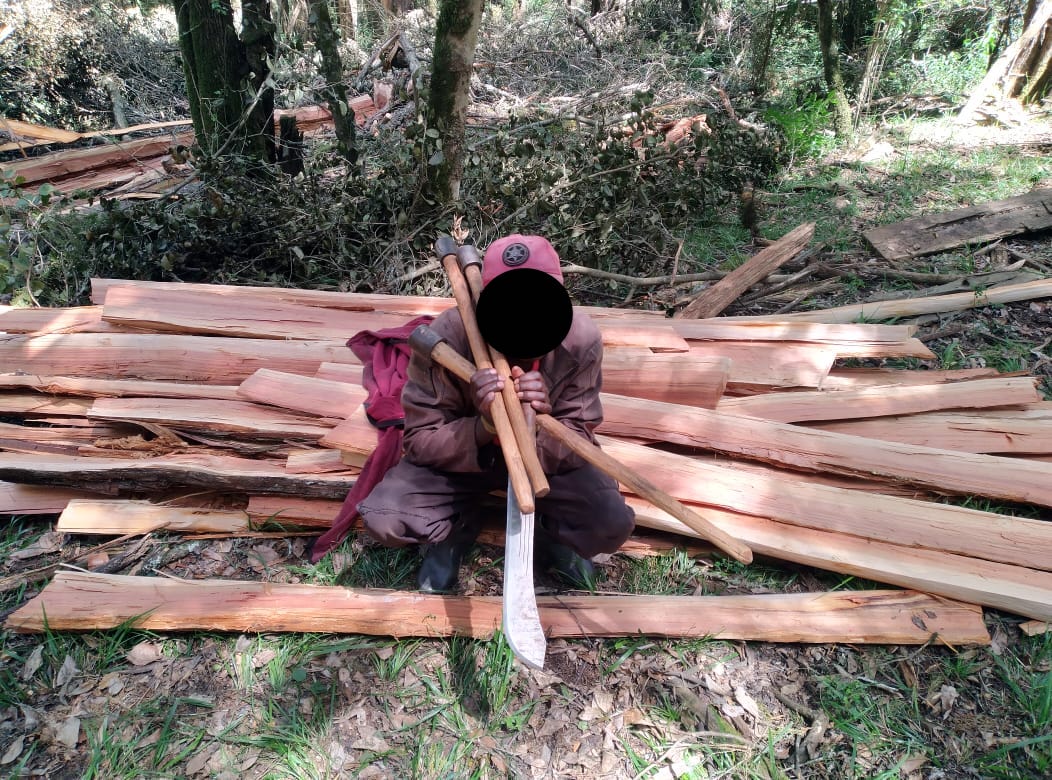
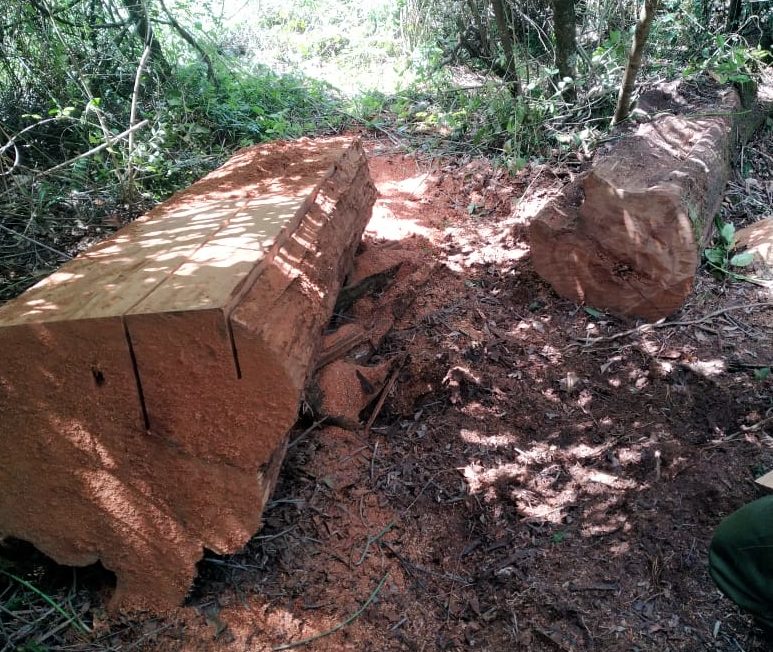

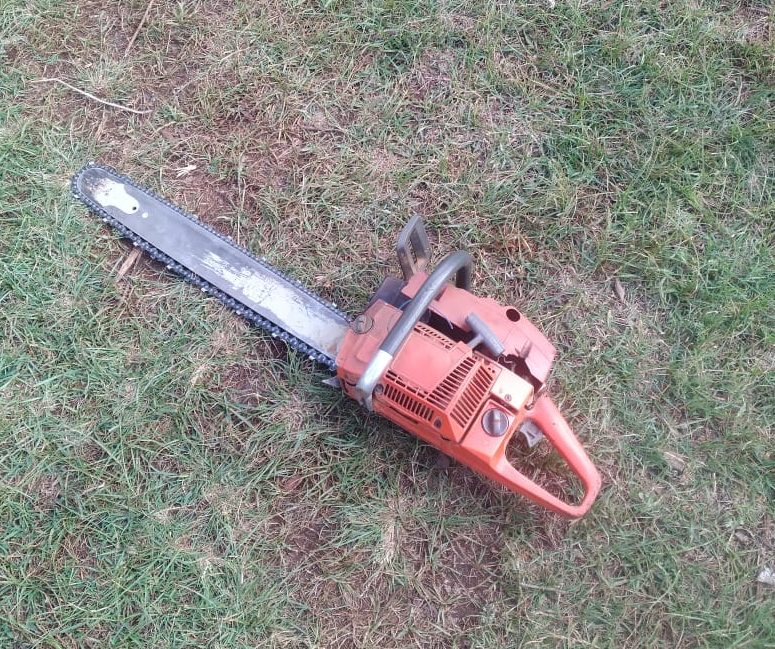
The Loita Forest, or “Naimina Enkiyio” (Forest of the Lost Child) is an extremely important area to protect, home to over 440 elephants, it covers an area of 500 km2 (123,553 acres). The surrounding Maasai community is our ally in protection and our community rangers work tirelessly to ensure that wildlife and wild spaces remain. In May, a key donor funded the launch of a third ranger unit in the Loita. The Band Foundation supported the running costs for the team for a year, and we are extremely grateful for this support.
The Nyakweri Forest in the Greater Mara Ecosystem is home to collared elephant Fitz, sponsored by Angama Foundation, and his herd of 60 elephants: it’s also at risk with increased levels of deforestation. The MEP “Foxtrot” ranger team is tasked with combatting the ever-increasing deforestation activities, mitigating conflict between the encroaching communities and the elephants that call this forest home and ensuring Fitz and his herd’s protection to these threats. It’s a big task for this team of Maasai men and women, and scenes like the one in these pictures are unfortunately all too common. On May 23, they were simultaneously destroying new charcoal kilns while moving Fitz and his herd away from the devastated part of the forest. The good news is, we’ve partnered with Seedballs Kenya to distribute seedballs, charcoal balls with an indigenous seed inside, after we’ve encountered an area of the forest in need to regeneration. Once the elephants have been moved out, and the kilns have been destroyed, we distribute the seedballs and let nature do the rest. In May, MEP’s Director of Research and Conservation Dr. Jake Wall hosted a small group to collaborate on a report that would highlight the situation in Nyakweri forest detailing the destruction and loss of habitat for both elephants and pangolins hoping to build a case for more protection.
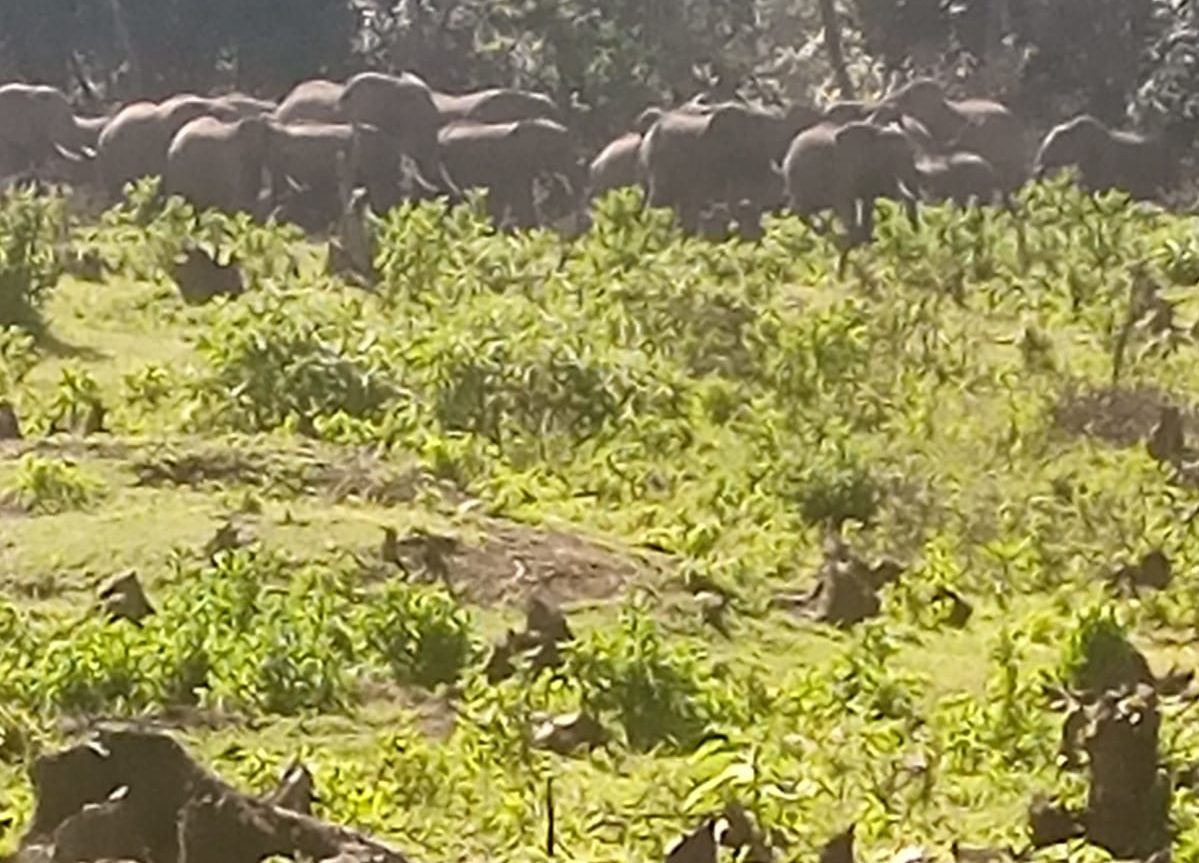
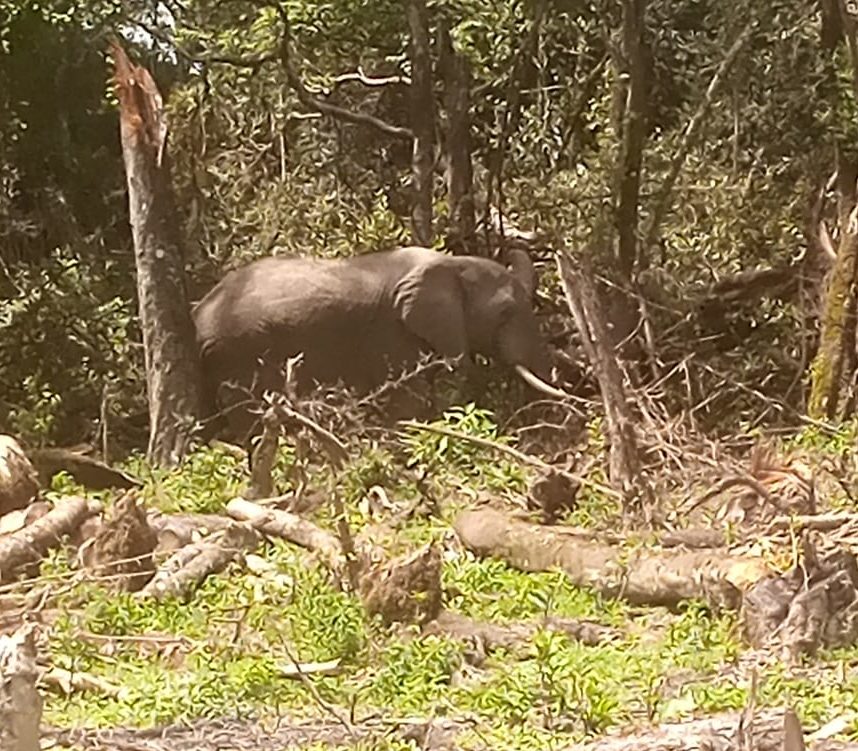
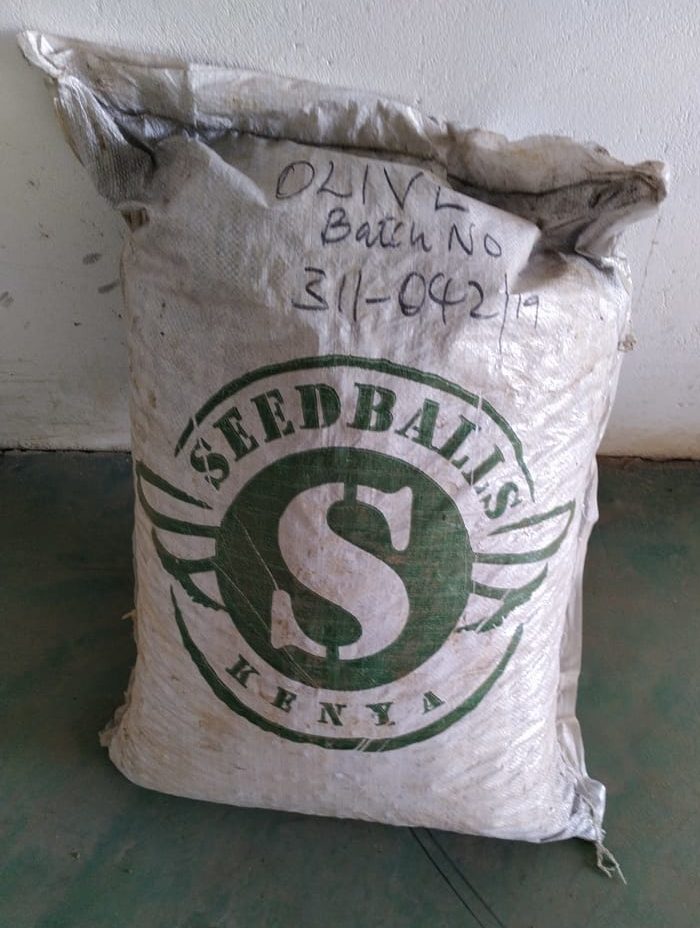
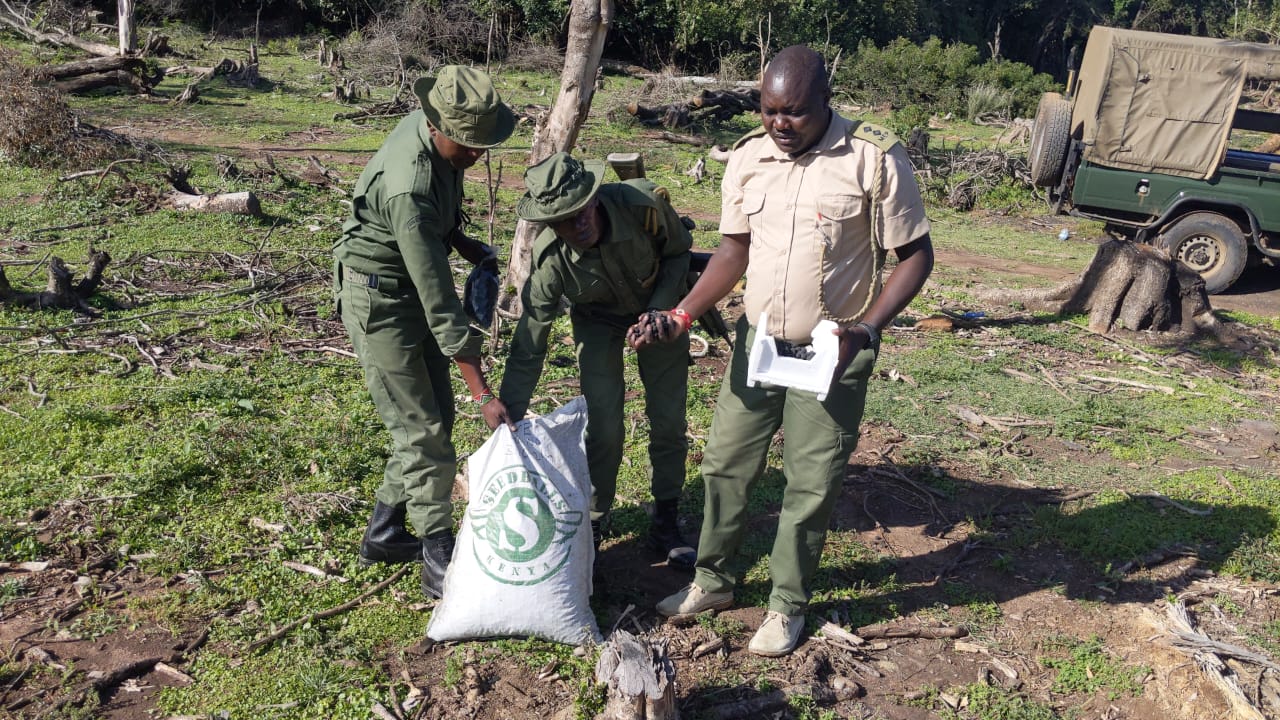
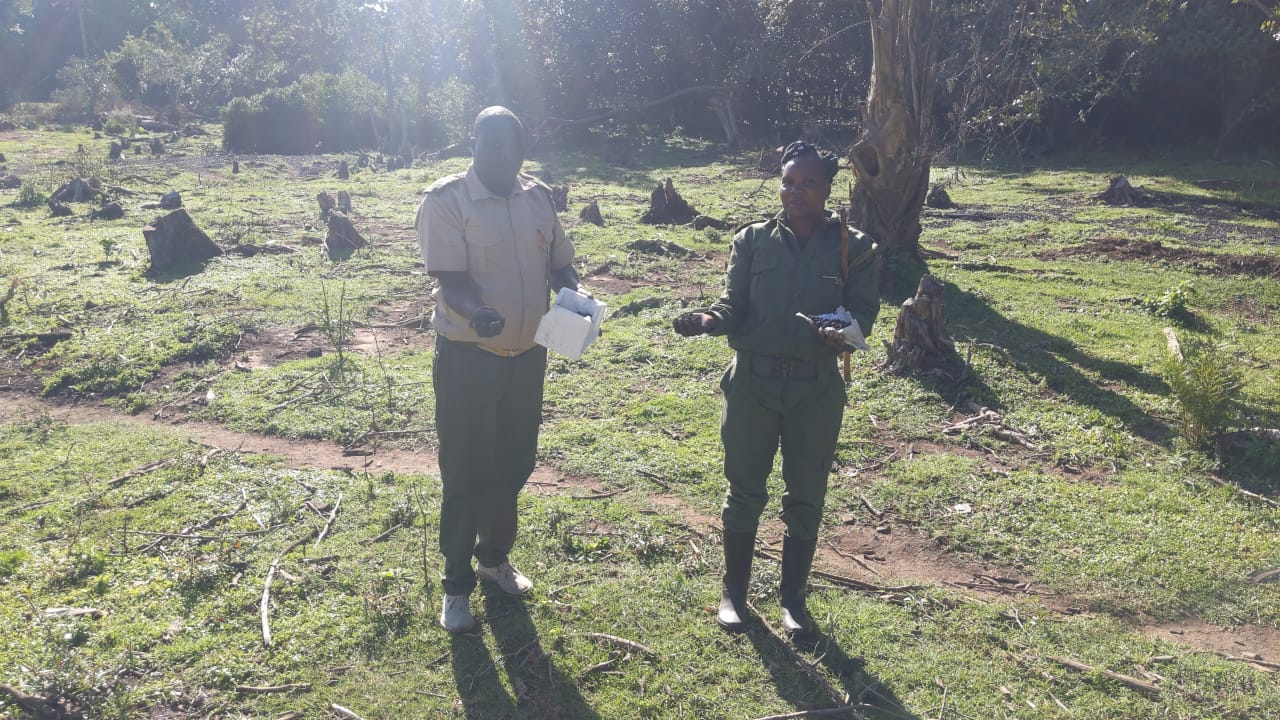

MEP’s rapid response team alongside Assistant Senior Warden Jackson Maitai responded on May 26 to a herd of 10 elephants that included collared elephant Matali raiding a farm in the Ngosuani area of the Mara, not far from headquarters. They began their mitigation efforts in the afternoon, and they lasted well into the night. The farm was surrounded by a fence and filled with ripe maize (corn) and beans. The rapid response team used their vehicle, drums to make loud noises, torches (flashlights) for a bright light and firecrackers that combine both (and never hurt the wildlife). Finally, by 12:19 a.m. the next day, the elephants moved out of the area thanks to the team’s efforts.
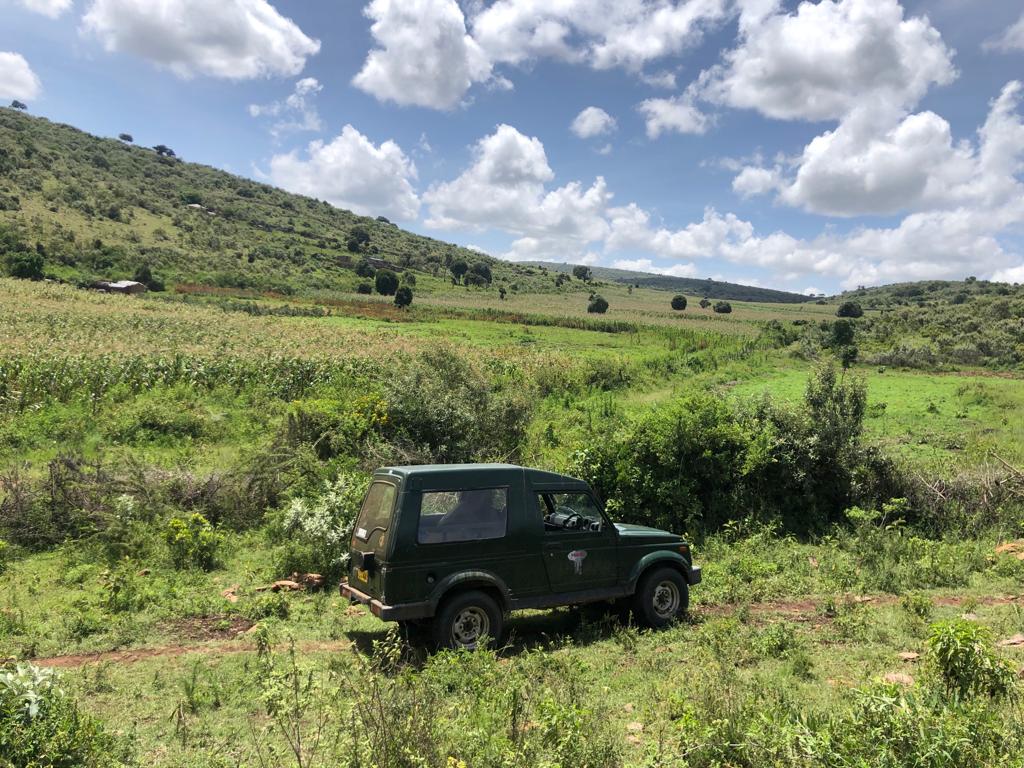
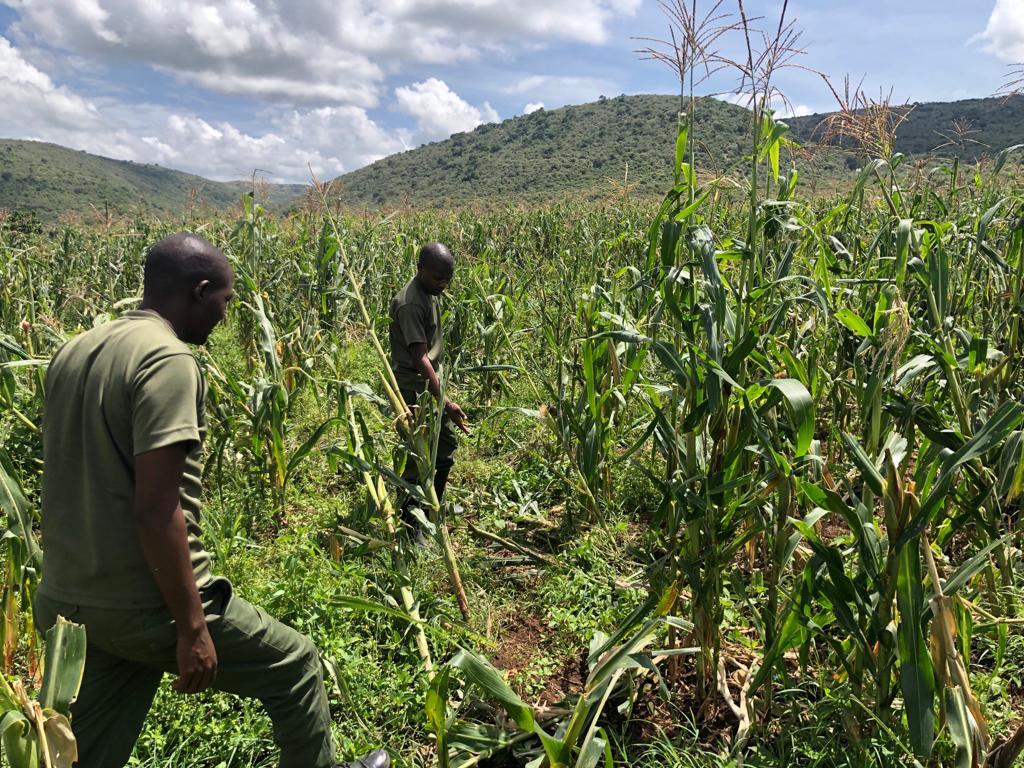
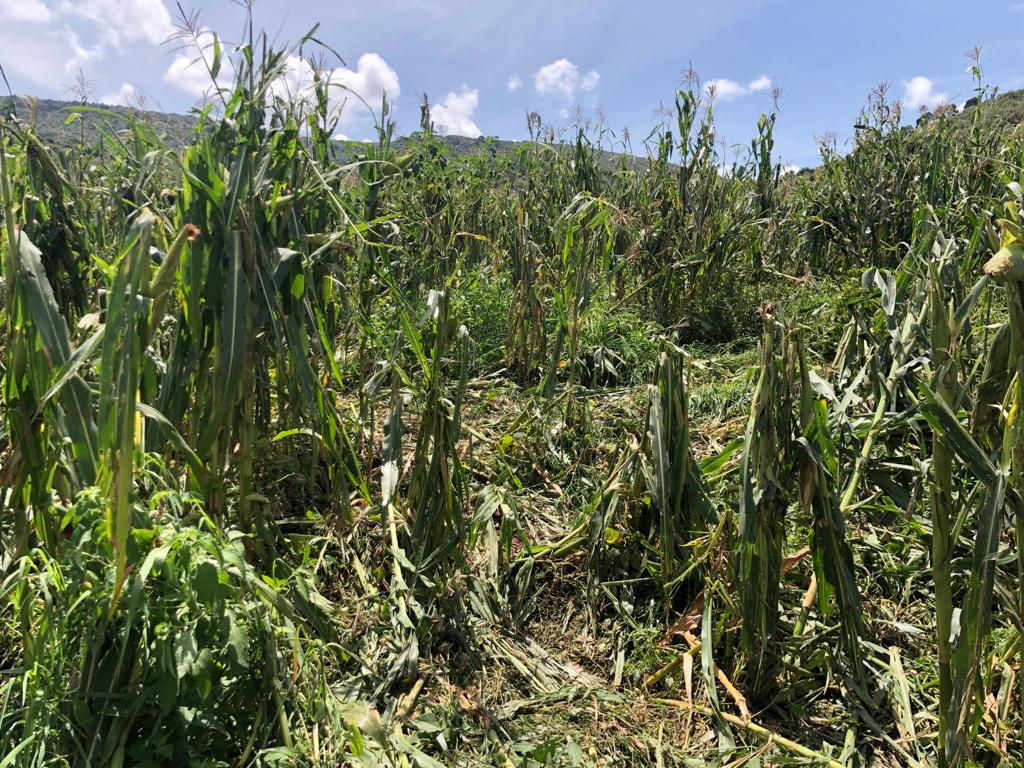

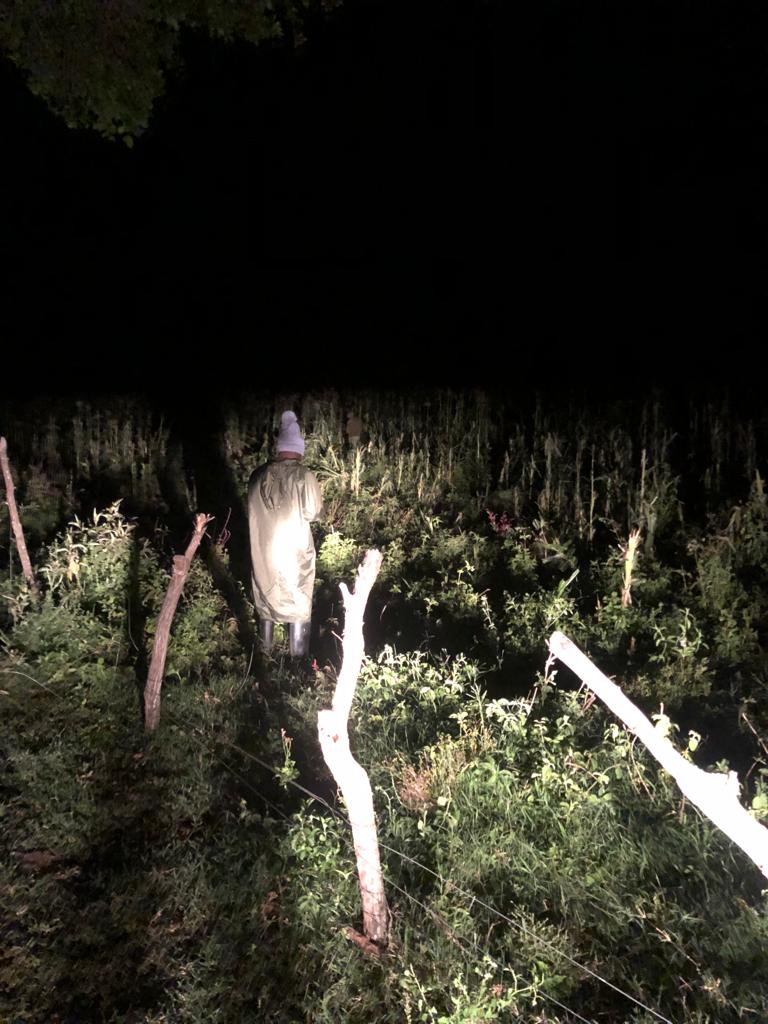
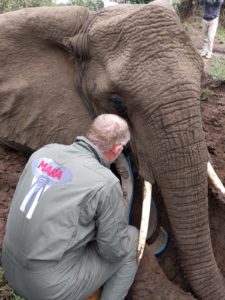 Kenya Wildlife Service (KWS), the Wildlife Research and Training Institute (WRTI) and MEP collared a new female elephant in Naroosura, a high conflict area that is near where collared elephants Clara, Harriet and Natasha reside. The elephant named Audrey was collared to allow MEP and KWS rangers to react to conflict and study this female and her herd’s movements through the area where the expanding human footprint has changed the landscape. KWS Vet Dr. Ephantus Ndambiri was joined on the collaring operation by MEP Conservation Officer Wilson Sairowua and the long-term monitoring (LTM) team with aerial support from CEO Marc Goss. The MEP leased helicopter was a critical tool to keep everyone safe on the ground while keeping this female’s herd away from the collaring operation team.
Kenya Wildlife Service (KWS), the Wildlife Research and Training Institute (WRTI) and MEP collared a new female elephant in Naroosura, a high conflict area that is near where collared elephants Clara, Harriet and Natasha reside. The elephant named Audrey was collared to allow MEP and KWS rangers to react to conflict and study this female and her herd’s movements through the area where the expanding human footprint has changed the landscape. KWS Vet Dr. Ephantus Ndambiri was joined on the collaring operation by MEP Conservation Officer Wilson Sairowua and the long-term monitoring (LTM) team with aerial support from CEO Marc Goss. The MEP leased helicopter was a critical tool to keep everyone safe on the ground while keeping this female’s herd away from the collaring operation team.
On May 6, the Mara Elephant Project “Golf” ranger team monitored collared elephant “Indy” sponsored by the Indianapolis Zoological Society and her herd of over 70 elephants while out on patrol. They were all enjoying a drink in Olarro Conservancy. It’s important for rangers to monitor collared elephants while on patrol to check for any injuries sustained from conflict and to note herd size and the overall health of the collared elephant and their herd. We were happy to see collared elephant Indy and her family doing well.
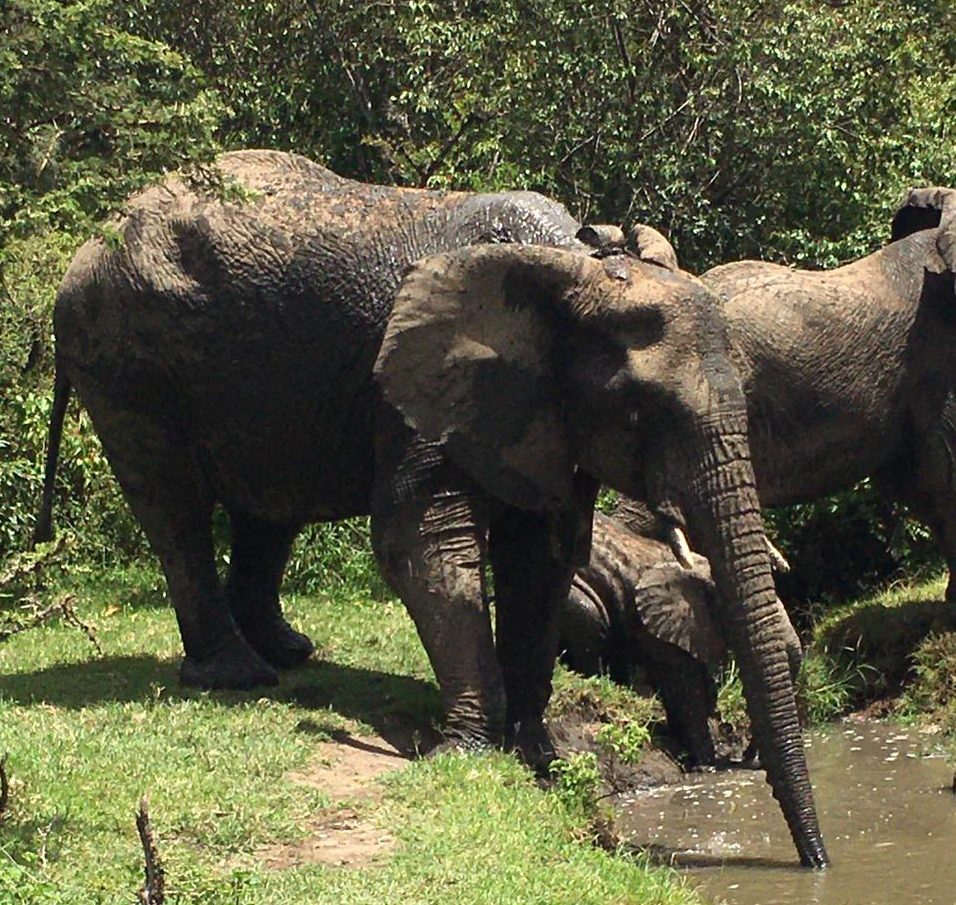

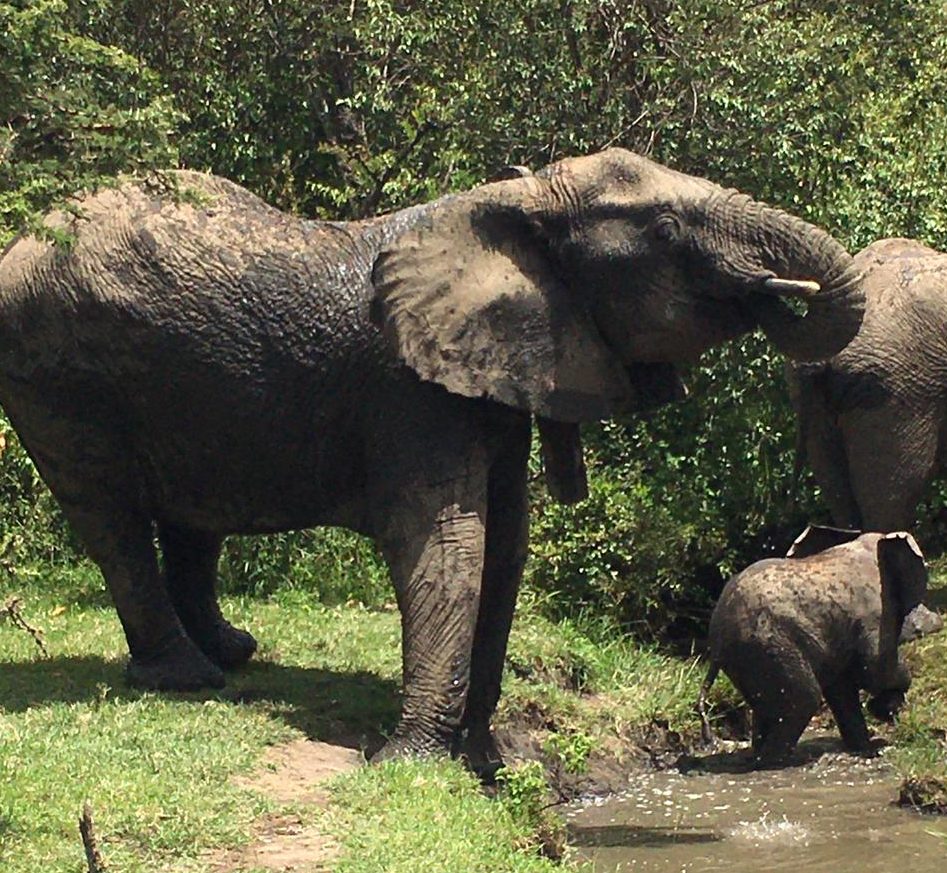
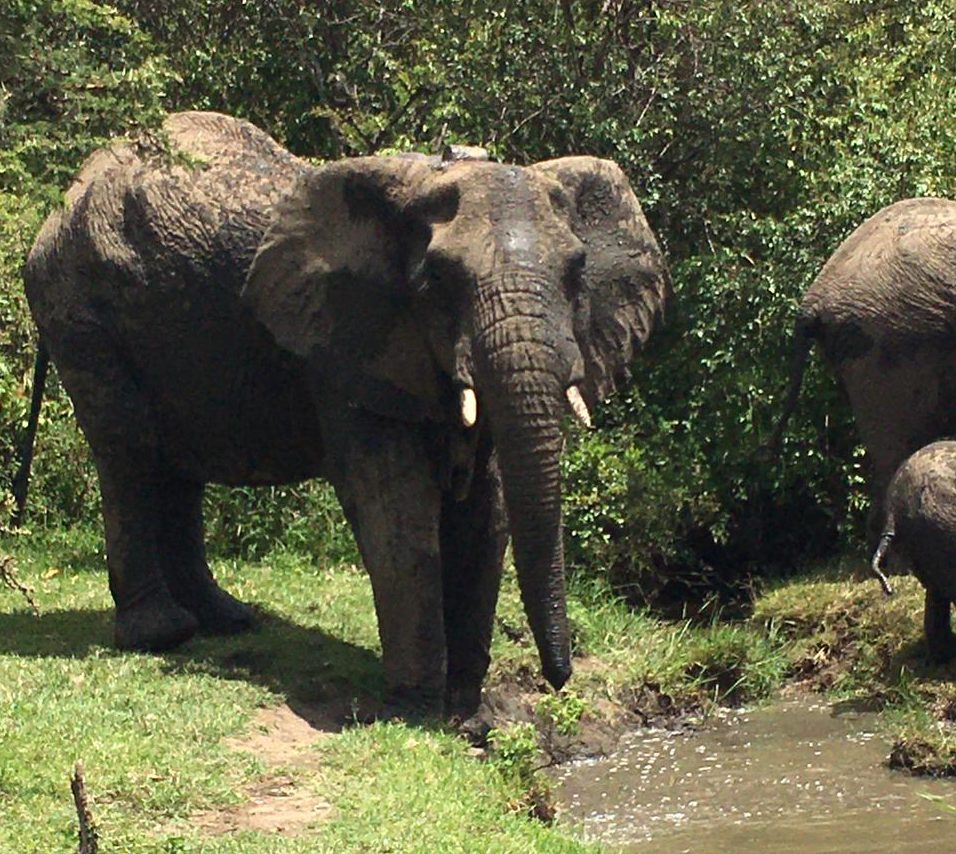
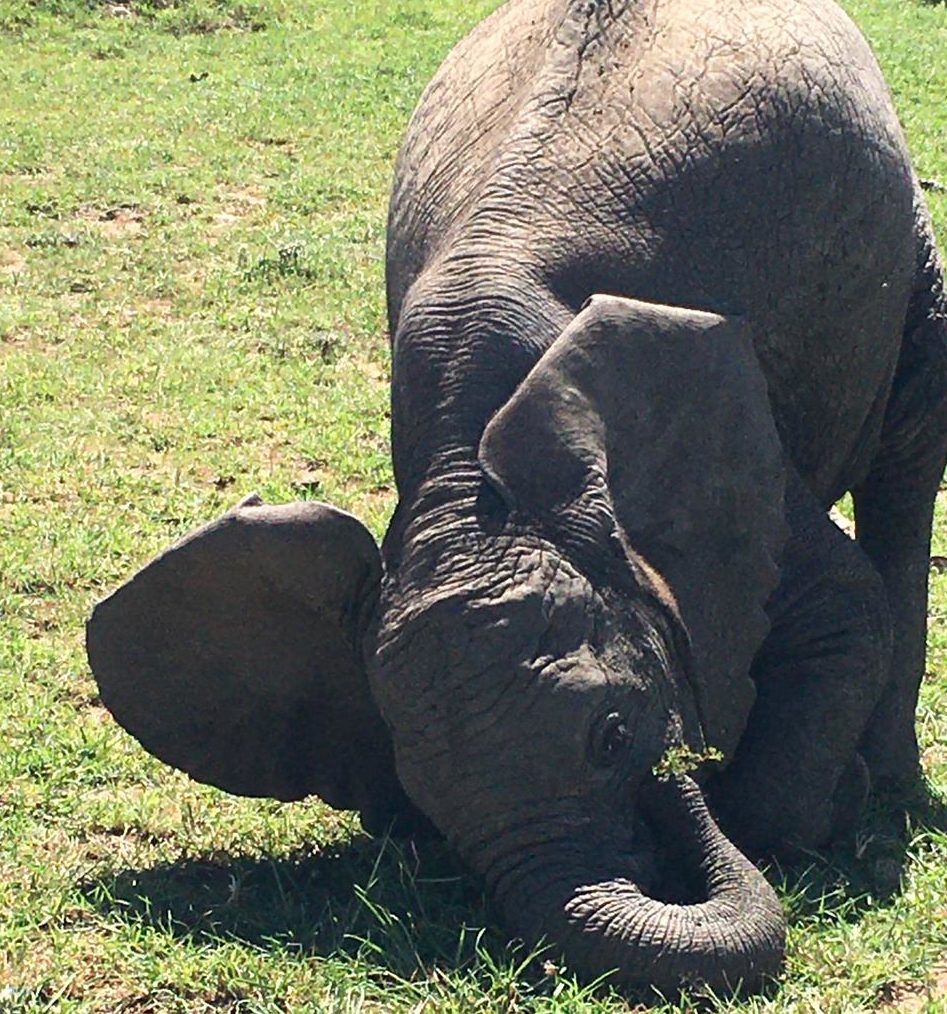
The MEP long-term monitoring (LTM) team got some great photos of individual 932, a newly identified male elephant in Ol Kinyei Conservancy.
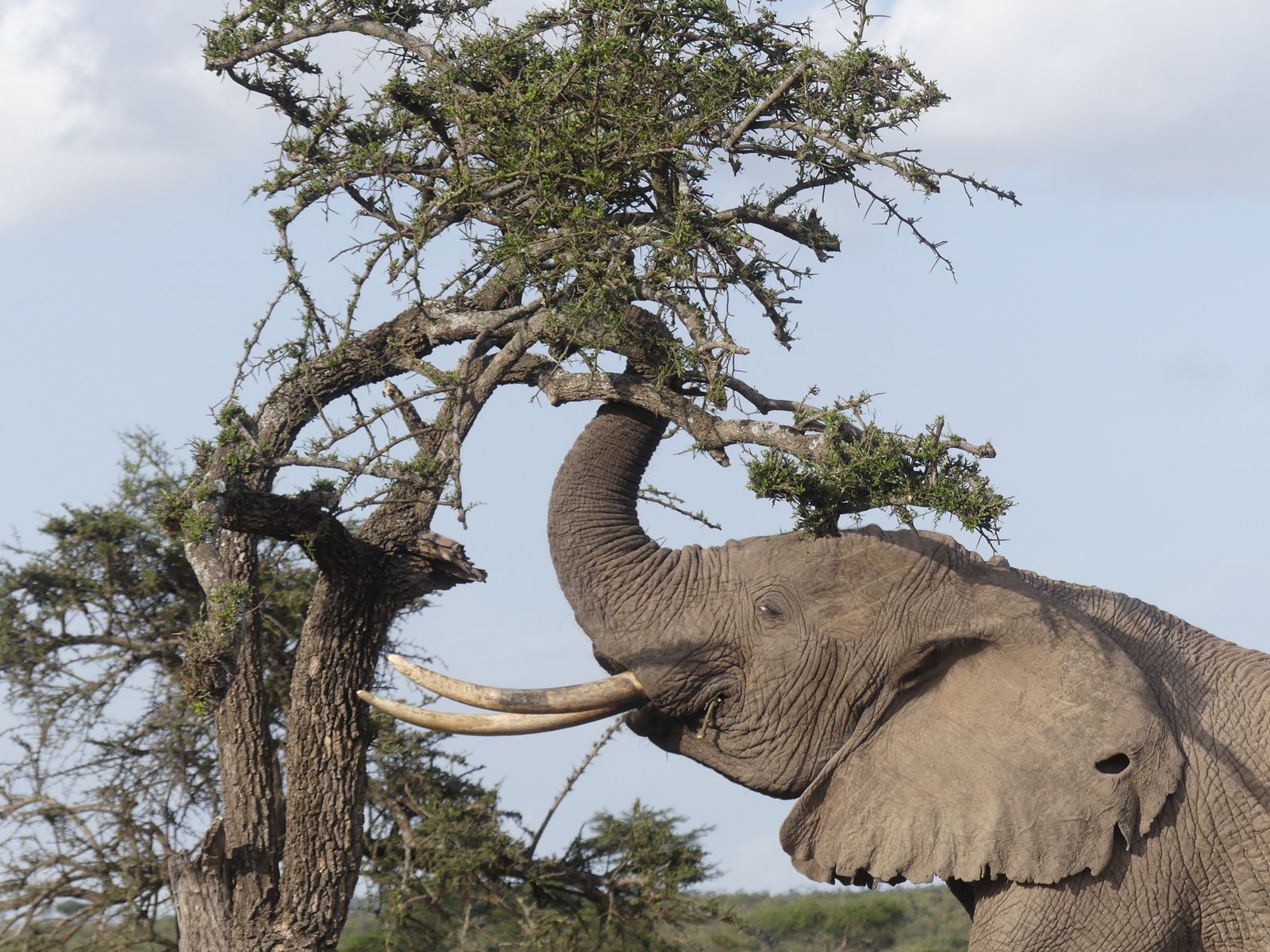
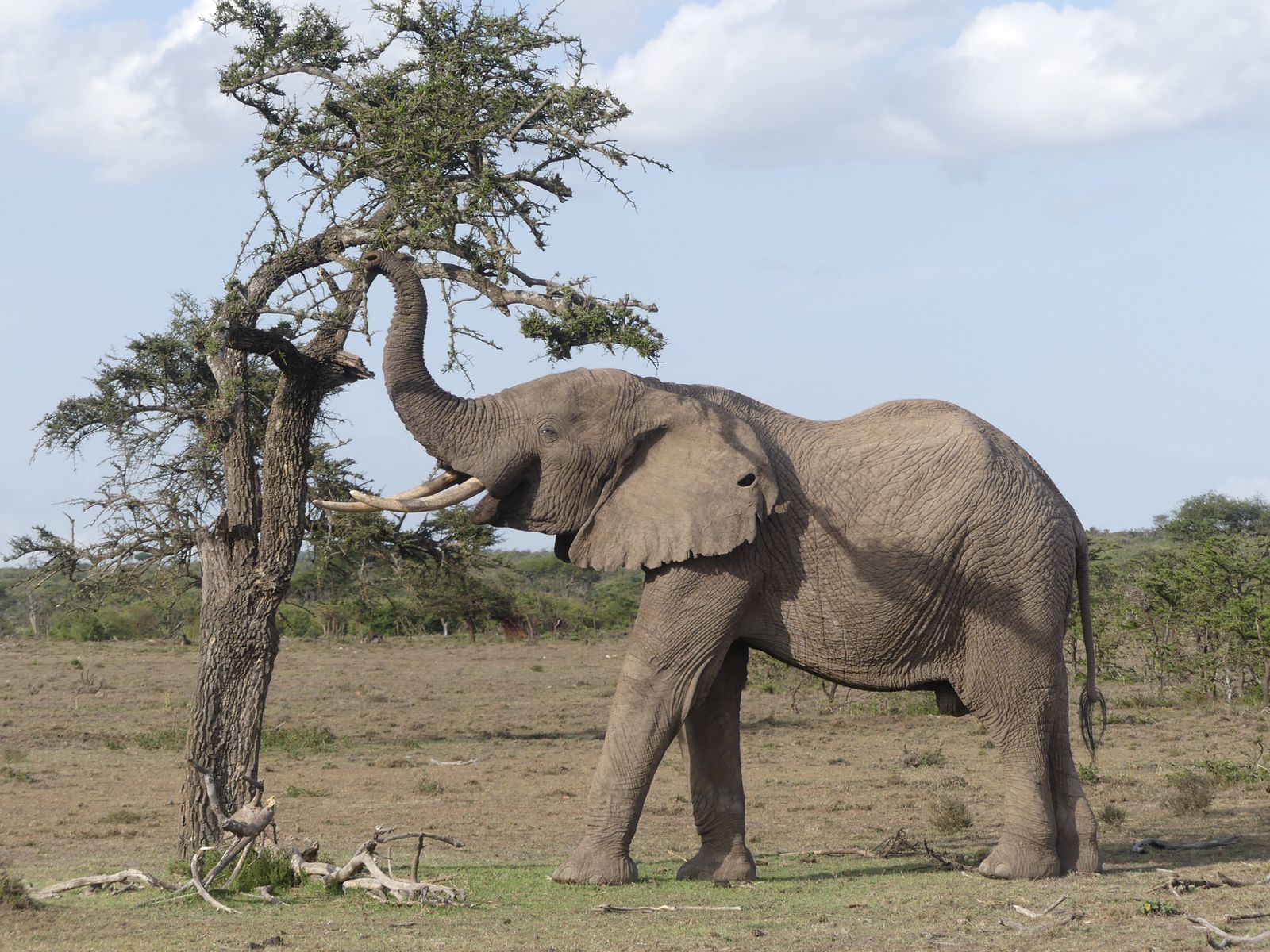

Two WRTI graduates arrived at MEP to start a 6-month internship program in conservation technology supported by the Allen Institute for AI (AI2). They will be learning all about EarthRanger, Elephantbook, Ecoscope, ArcGIS and mobile field apps and other technologies MEP is building or using. Catherine Villeneuve arrived at the beginning of May from the University of Laval, also generously sponsored by AI2, to help us look at the application of machine learning methods to the behavioural classification of elephant movement data. Catherine is also contributing to MEP’s Ecoscope code library for analytics.
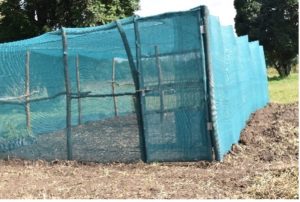 In May, the MEP Experimental Farm launched several new activities and had some great visitors. The rains were off during the beginning of the month, but the last week, like all over the country, we experienced average rainfall. Last month, we purchased heirloom seeds and this month a kitchen garden and nursery structure using shade nets was built (pictured left). We have planted 27 different herbs and vegetables as well as five different varieties of tomatoes, sweet peppers and hot peppers. After the crops yield, we can re-produce the seeds that can be re-used in our farm unlike the hybrid seeds. This month we added three more camera traps at the farm. We are having a good amount of predation and adding cameras was essential to capture images for our research. There are several crops that haven’t had any predation in May including rosemary, tree tomato, tea tree, peppermint and lavender. We’d like to thank Explorers Against Extinction for their continued efforts to raise £10,000 to support the MEP Experimental Farm project in 2022.
In May, the MEP Experimental Farm launched several new activities and had some great visitors. The rains were off during the beginning of the month, but the last week, like all over the country, we experienced average rainfall. Last month, we purchased heirloom seeds and this month a kitchen garden and nursery structure using shade nets was built (pictured left). We have planted 27 different herbs and vegetables as well as five different varieties of tomatoes, sweet peppers and hot peppers. After the crops yield, we can re-produce the seeds that can be re-used in our farm unlike the hybrid seeds. This month we added three more camera traps at the farm. We are having a good amount of predation and adding cameras was essential to capture images for our research. There are several crops that haven’t had any predation in May including rosemary, tree tomato, tea tree, peppermint and lavender. We’d like to thank Explorers Against Extinction for their continued efforts to raise £10,000 to support the MEP Experimental Farm project in 2022.





In May, James Lewin Photography and Pie Aerts Photography both sold prints to benefit MEP’s core operations. Asilia Giving continues to be an important tourism partner, supporting us in May with a grant of $2,500 through MEP Trust in Kenya. Thank you to all of our donors in May. Finally, we had some great entries in the May Greatest Maasai Mara photo competition, thank you photographers and Angama Foundation for your continued support.
A May entry by Julie Oldroyd.
